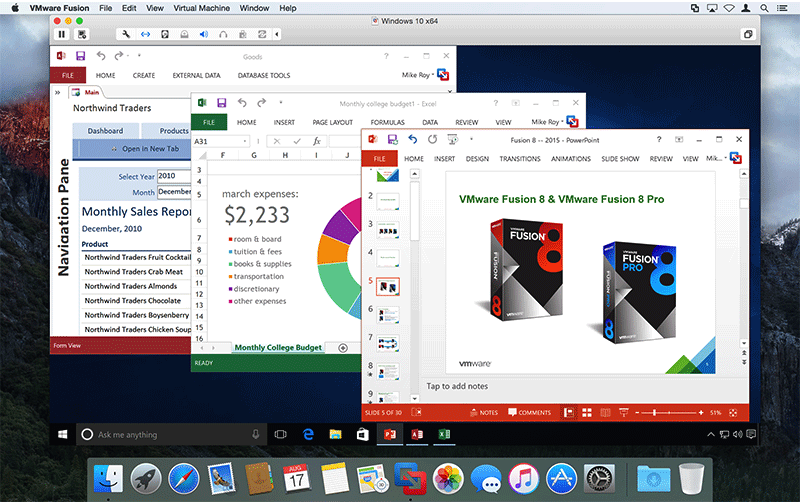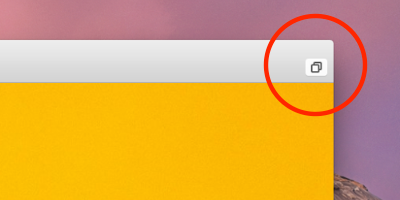

Leaving VMwareFusion runningĮven experienced Mac users will make this mistake: click the red X to close a program. It’s best to take the button away altogether, by right-clicking that gray area, selecting Customize Toolbar… and dragging the button off.īeyond the confusion, you don’t want anyone forgetting that Fusion is running at all. Plus, if you hit that button when no Windows programs are running, the VM disappears and you have to click View > Single Window to get it back. That’s fine if you really want to switch between all your programs seamlessly, but in many cases, you want to remind your users that they’re in their Windows environment. That button enters Fusion’s Unity mode, which strips away the Windows desktop and only shows the Windows applications that are running. VMware, however, can be blamed for the “Unity” button. So updating the operating system again caused an unexpected full-screen incident.
#VMWARE FUSION 8 UNITY MAC OS X#
In later Mac OS X versions, that function was moved to the green button in the upper left, and to make it do what it used to do (zoom, or enlarge the window to fit the content), one had to hold the Option key as well. Not accustomed to Macs, she panicked, of course. She’d pressed that button and the Windows virtual machine had taken over her whole screen. When I tweeted that last summer, my user was still on Mac OS X 10.8, which still had a dedicated full-screen button in the upper right corner of most windows. ME: OK, do what you normally do I'll observe. USER: No! I don't even know what that is. Pressing that buttonĪnyone in tech support is intimately familiar with this scenario: Every single person I’ve supported using Fusion 6 or 7 has hit all three of these snags. It comes with the backing of a real company and it’s pretty user-friendly.
#VMWARE FUSION 8 UNITY SOFTWARE#
It’s open source, it’s flexible, and it has a lot of configuration options.įor office users who need to run Windows programs on their Macs, though, I prefer the commercial software VMware Fusion. If money doesn't matter, go for Parallels Desktop.For cheap server virtualization, I like VirtualBox. Not _that_ much difference and you can get used to everything. VMware Fusion has good support for macOS as VM, but the GUI itself is often clunky and sometimes outright ugly (progress bars, menu bar dialogs, small stuff like that).Īt the end of the day all run their VMs fine and fast and stable.

VirtualBox is less comfortable to work with when you want to emulate macOS, but has superior support for any sort of Linux machine. In my experience VirtualBox and VMware Fusion on a Mac are about as good as the other. I've also tested VirtualBox (which has been my go-to product on Windows) in the time between the Parallels Desktop subscription ended and VMware Fusion 12 became free-as-in-beer. And - because I am a penny pincher with Scottish roots - I'll stick with it, though I miss Parallels Desktop. Better integrated, less resource intensive and just "slicker" to use.īut it costs money, and I am a cheapskate, so when my subscription ran out and VMware Fusion offered the most modern version for free, I opted to test it. To answer your question upfront: Parallels Desktop is waaaaay smoother on the Mac. I've switched from 10 years of using Parallels Desktop to VMware Fusion 12 about 2 months ago.


 0 kommentar(er)
0 kommentar(er)
